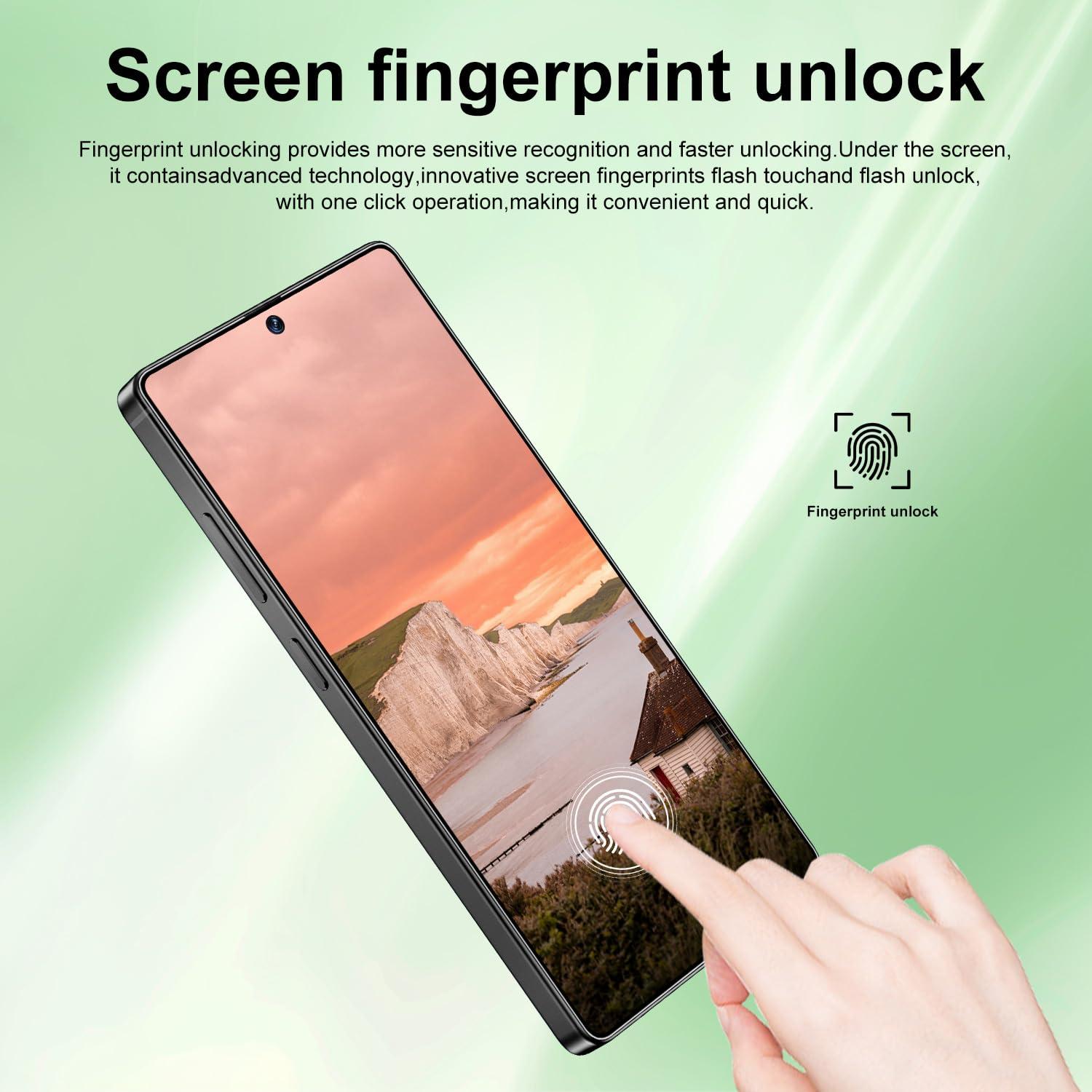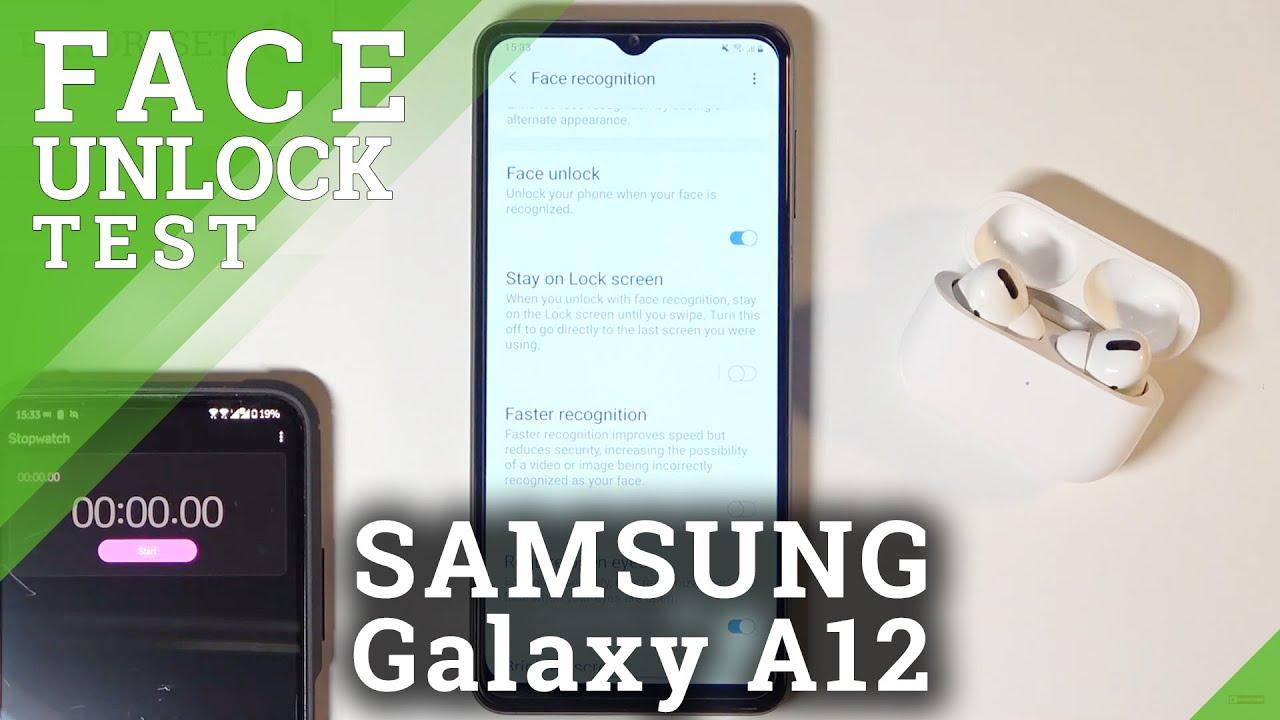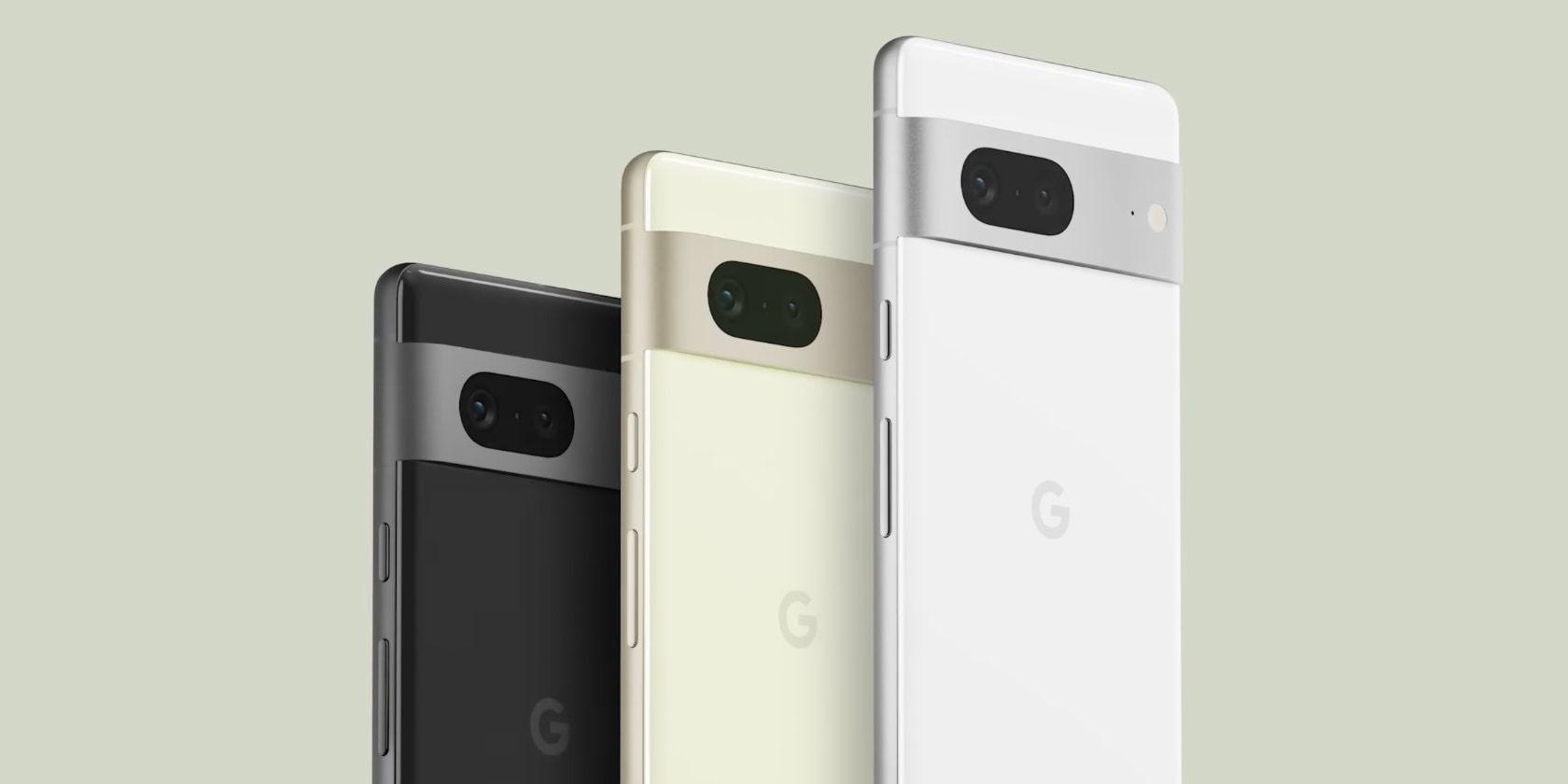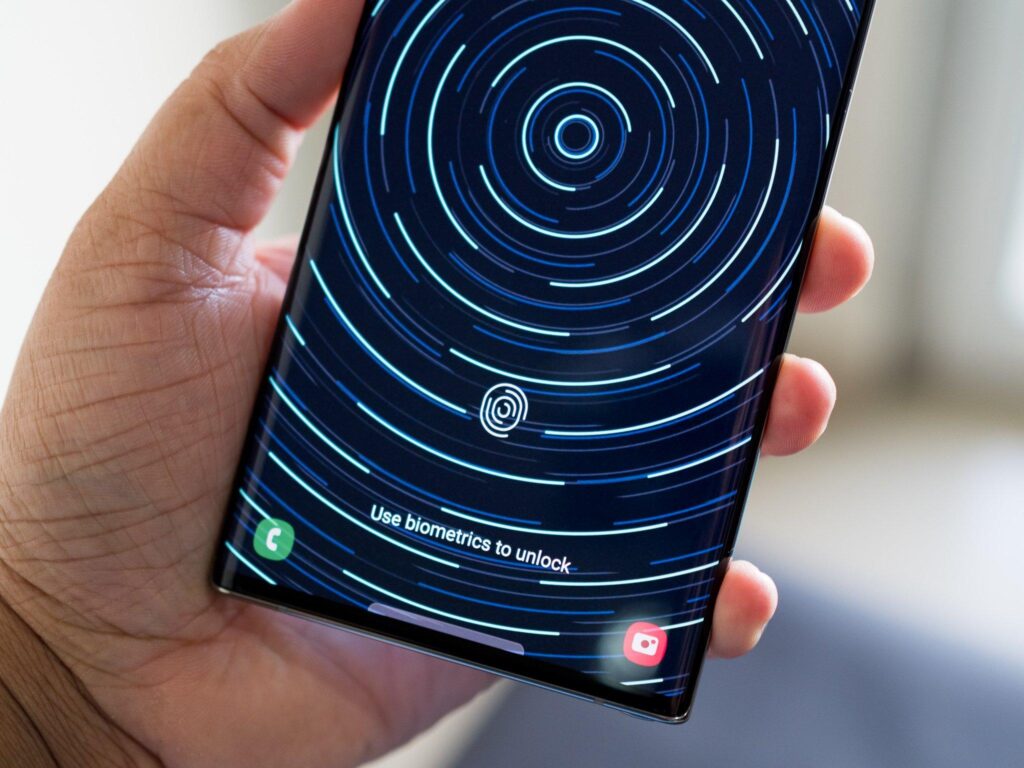In a world where every second counts, the speed at which you unlock your phone can make all the difference. Whether you’re rushing through a busy morning or simply eager to dive into your favorite apps, seamless and swift access has become a non-negotiable feature. Enter the realm of phones equipped with the fastest face unlock and fingerprint sensors – devices engineered to recognize you in the blink of an eye, blending cutting-edge technology with everyday convenience. This article explores the frontrunners in biometric unlocking, highlighting the smartphones that marry security with lightning-fast responsiveness to keep you connected without delay.
Table of Contents
- Phones With Fastest Face Unlock and Fingerprint Sensors
- Understanding the Technology Behind Rapid Biometric Authentication
- Comparing Speed and Accuracy Across Leading Smartphone Models
- Top Smartphones Offering Seamless Security and Convenience
- Expert Recommendations for Choosing Phones With Lightning-Fast Unlock Features
- Key Takeaways

Phones With Fastest Face Unlock and Fingerprint Sensors
When it comes to unlocking your phone seamlessly, milliseconds matter. Modern smartphones have pushed the boundaries of biometric technology, delivering lightning-fast face unlock and fingerprint sensors that make accessing your device almost instantaneous. These innovations are not just about speed; they also ensure enhanced security without compromising convenience.
Face unlock systems today utilize advanced infrared sensors and AI-powered algorithms to recognize your facial features accurately-even in low light or at tricky angles. Brands like Apple and Samsung have perfected 3D facial recognition, offering users a quick and secure way to unlock their phones with just a glance. Meanwhile, some Android manufacturers have integrated hybrid solutions combining face recognition with other sensors to cut down unlock times dramatically.
Fingerprint sensors have evolved from physical buttons to ultra-responsive in-display technology that reacts almost instantly. Optical and ultrasonic under-display scanners now read your fingerprint with remarkable precision and speed, sometimes unlocking the device in under 0.3 seconds. This rapid response is especially appreciated by users who value effortless access without sacrificing security. Below is a quick comparison of some standout models:
| Phone Model | Face Unlock Speed | Fingerprint Sensor Type | Fingerprint Unlock Speed |
|---|---|---|---|
| iPhone 14 Pro | ~0.25 sec (Face ID) | None (Face ID only) | N/A |
| Samsung Galaxy S23 Ultra | ~0.3 sec (3D Face Unlock) | Ultrasonic In-Display | ~0.28 sec |
| OnePlus 11 | ~0.35 sec (2D Face Unlock) | Optical In-Display | ~0.27 sec |
| Google Pixel 7 Pro | ~0.4 sec (2D Face Unlock) | Optical In-Display | ~0.3 sec |
Ultimately, the choice between face unlock and fingerprint sensors often comes down to personal preference and usage scenarios. For those who prefer hands-free access, face unlock is a game-changer, while fingerprint sensors provide quick reliability, especially in masks or low-light environments. Phones equipped with both technologies offer the best of both worlds, ensuring you never have to wait more than a fraction of a second to get past your lock screen.

Understanding the Technology Behind Rapid Biometric Authentication
Behind the seamless experience of unlocking your phone in a fraction of a second lies an intricate blend of hardware innovation and software optimization. Rapid biometric authentication thrives on advanced sensor technologies coupled with powerful algorithms that work in harmony to recognize unique facial features or fingerprint patterns almost instantly. This synergy ensures not only speed but also accuracy, minimizing false positives and enhancing security.
Face unlock systems utilize a combination of infrared sensors, dot projectors, and high-resolution cameras to map the contours of your face. These components create a detailed 3D model, allowing the device to distinguish between real faces and photographs or masks. Meanwhile, the software employs machine learning to adapt to subtle changes in your appearance, such as glasses or facial hair, further speeding up recognition over time.
On the fingerprint sensor front, manufacturers are pushing boundaries with ultrasonic and optical technologies. Ultrasonic sensors use sound waves to capture a detailed 3D image of the fingerprint ridges beneath the skin’s surface, providing faster and more reliable authentication even with wet or dirty fingers. Optical sensors, on the other hand, capture high-resolution images using light, balancing speed and cost-effectiveness for mid-tier devices.
- Machine learning algorithms: Continuously improving recognition accuracy and speed
- Multi-sensor integration: Combining data from various sensors for robust authentication
- Hardware optimization: Dedicated chips and processors accelerating biometric computations
| Technology | Speed | Accuracy | Usage |
|---|---|---|---|
| Infrared Face Mapping | ~0.3 sec | High | Premium Phones |
| Ultrasonic Fingerprint | ~0.25 sec | Very High | Flagship Devices |
| Optical Fingerprint | ~0.4 sec | Medium | Mid-Range Phones |

Comparing Speed and Accuracy Across Leading Smartphone Models
When it comes to biometric security, speed and precision are paramount. The latest smartphone models have made significant strides in minimizing unlocking times while enhancing sensor accuracy. Brands like Apple and Samsung have refined their Face ID and ultrasonic fingerprint sensors to deliver near-instantaneous access without compromising security. On the other hand, emerging contenders are pushing the envelope with under-display fingerprint readers that rival traditional capacitive sensors in both speed and reliability.
In real-world scenarios, unlocking speed can be influenced by factors such as ambient lighting for facial recognition and finger placement for fingerprint sensors. Devices equipped with advanced infrared sensors and multi-point fingerprint scanning algorithms tend to perform consistently under various conditions, ensuring users experience minimal delays. The integration of AI-driven adaptive learning also allows some models to improve recognition accuracy over time, adapting to subtle changes in user appearance or finger positioning.
Below is a comparison table highlighting the average unlocking speeds and false rejection rates (FRR) for a selection of top-tier smartphones:
| Smartphone Model | Face Unlock Speed | Fingerprint Sensor Speed | False Rejection Rate (%) |
|---|---|---|---|
| Apple iPhone 14 Pro | 0.8 sec | N/A | 1.2 |
| Samsung Galaxy S23 Ultra | 1.1 sec | 0.9 sec | 0.8 |
| Google Pixel 7 Pro | 0.9 sec | 1.2 sec | 1.5 |
| OnePlus 11 | 1.0 sec | 0.7 sec | 0.9 |
Key takeaways:
- Face unlock generally provides faster access but depends heavily on environmental factors.
- Fingerprint sensors offer consistent performance regardless of lighting, with newer ultrasonic types leading in speed.
- False rejection rates remain impressively low across all models, ensuring security without sacrificing convenience.

Top Smartphones Offering Seamless Security and Convenience
In today’s fast-paced digital world, the need for quick yet reliable smartphone security has never been more critical. Modern flagship devices now boast face unlock features that work almost instantaneously, even in low-light conditions, thanks to advanced infrared sensors and AI-powered facial recognition algorithms. This means users can access their phone with just a glance, making everyday interactions smoother and more efficient.
Complementing facial recognition, fingerprint sensors have evolved beyond simple optical readers to ultrasonic and in-display variants. These technologies offer not only lightning-fast response times but also enhanced accuracy and security. Whether it’s a quick tap or a gentle press, unlocking your device feels seamless, reducing wait times and improving user satisfaction.
Key features that elevate smartphone security and convenience include:
- Multi-angle facial recognition for reliable unlocking from various positions
- Under-display fingerprint sensors with haptic feedback
- AI-driven anti-spoofing technology to prevent unauthorized access
- Integration with secure payment systems and biometric app locks
| Smartphone Model | Face Unlock Speed | Fingerprint Sensor Type | Additional Security Features |
|---|---|---|---|
| Galaxy S23 Ultra | 0.2 seconds | Ultrasonic In-Display | 3D Facial Mapping, Secure Folder |
| iPhone 14 Pro | 0.25 seconds | Capacitive Touch ID (side button) | Face ID with Attention Awareness |
| OnePlus 11 | 0.18 seconds | Optical In-Display | AI Anti-Spoofing, App Lock |
| Google Pixel 7 Pro | 0.3 seconds | In-Display Fingerprint | Face Unlock, Titan M2 Security Chip |
Expert Recommendations for Choosing Phones With Lightning-Fast Unlock Features
When selecting a smartphone that boasts lightning-fast unlock features, it’s essential to understand the technology behind these sensors. Face unlock systems rely heavily on advanced infrared and 3D mapping technologies, which provide both speed and security. Meanwhile, fingerprint sensors have evolved from traditional capacitive designs to ultrasonic and optical variants, offering quicker recognition and improved accuracy, even in challenging conditions like wet or dirty fingers.
Consider these key factors to ensure you get the best unlock experience:
- Sensor type: Ultrasonic sensors generally unlock faster and are more secure compared to optical sensors.
- Processor integration: Devices with powerful processors handle biometric data swiftly, reducing lag during unlocking.
- Environmental adaptability: Sensors that perform well in low light or direct sunlight offer a seamless unlocking experience.
- Software optimization: A well-tuned OS can dramatically enhance unlock speed and reliability.
To help visualize the differences, here’s a quick comparison of popular sensor types:
| Sensor Type | Speed | Security Level | Best Use Case |
|---|---|---|---|
| Ultrasonic Fingerprint | Very Fast | High | All lighting conditions, wet fingers |
| Optical Fingerprint | Fast | Moderate | Bright light, dry fingers |
| 3D Face Recognition | Instant | Very High | Day and night, secure authentication |
| 2D Face Unlock | Fast | Low | Bright environments, convenience over security |
Finally, the user’s daily habits should influence the choice. If you frequently use your phone outdoors or in dimly lit places, a sensor with strong environmental adaptability is crucial. Likewise, those who prioritize security over convenience might lean toward 3D face recognition or ultrasonic fingerprint sensors, as these technologies offer enhanced protection against spoofing attempts. Taking time to test these features personally, when possible, can make a world of difference in satisfaction and device usability.
Key Takeaways
In a world that never slows down, our devices must keep pace-seamlessly, swiftly, and securely. Phones with the fastest face unlock and fingerprint sensors are not just about cutting-edge technology; they’re about unlocking moments without missing a beat. As biometric security continues to evolve, what once seemed like science fiction is now at our fingertips, redefining convenience in our daily lives. Whether you prioritize speed, accuracy, or a blend of both, the future of phone security promises to be as rapid as it is reliable-ensuring that your digital world is always just a glance or a touch away.

